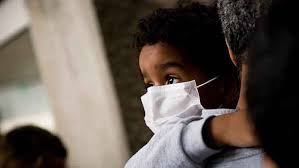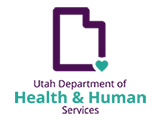Infectious disease

Infectious diseases are caused by organisms such as bacteria, viruses, fungi or parasites. A person may become ill with an infectious disease through contact with an infected person (directly or indirectly), an insect or animal carrying disease, or contaminated food or water.
Every living organism is at risk of illness from infectious diseases. Some factors that are associated
with the probability of becoming ill with infectious disease include:
The information collected during the disease investigation process has all personal identifiers removed and is then available to the public. This de-identified public data is used by both public and private entities for research, further supporting the importance of tracking infectious diseases.
- Individual health status
- Age
- Immunization status
- Community immunization status
- Environmental conditions
- Region or location of residence
- Proximity to sources of disease transmission
- Occupation
- Behavior
- Illicit substance use (including injecting drugs)
How To Reduce Risk
To reduce the risk of illness it is important to control infectious disease by disrupting disease transmission. This can be accomplished by:- Vaccination: Infectious diseases that are vaccine preventable are controlled by providing immunity to susceptible individuals. The more people that are vaccinated in a community the less likely an infectious disease is able to spread and make people ill.
- Hand Washing: Hand washing decreases the amount of infectious diseases that we are potentially exposed to by physically removing pathogenic organisms from our hands.
- Food Safety and Water Quality: Following good food safety and handling practices decreases the quantity of pathogenic organisms that are ingested.
- Stay Home When Sick: Prevent spreading illness to others.
- Use Precautions: When outdoor use insect repellent and protective clothing to protect yourself from insects that may carry infectious diseases
- Condoms: Consistent and correct use of latex condoms reduces the risk of STDs and HIV transmission. Abstaining from sexual activity, or being in a long-term mutually monogamous relationship with an uninfected partner are also ways to avoid the transmission of STDs and HIV.
- Clean Needles: Sharing needles and other items contaminated with blood with others who may be infected with a bloodborne disease such as HIV or Hepatitis C is a direct route for the virus to enter the blood stream. Using clean needles and not sharing them will reduce the risk of spreading disease.
How It's Tracked
Reportable infectious diseases in the United States are tracked by local, state, and federal governments utilizing a cooperative relationship with clinicians, laboratorians, and community service providers. When an individual is identified with an infectious disease clinicians and laboratorians report to their local or state health department. All disease specific information is collected regarding the infectious disease event and is then reported to the CDC. The information collected can be used for many purposes at many different jurisdictional levels such as to:- Educate the public
- Guide policy and public health decisions
- Alert clinicians to aid in diagnosis
- Educate the medical community
- Implement public health interventions, including during epidemics
- Provide partner services
- Describe infectious disease in different populations
- Identify risk factors for disease
The information collected during the disease investigation process has all personal identifiers removed and is then available to the public. This de-identified public data is used by both public and private entities for research, further supporting the importance of tracking infectious diseases.
- Chlamydia cases
- Foodborne illness - Campylobacter Infections
- Foodborne illness - Salmonella Infections
- Foodborne illness - Shiga Toxin-producing E. coli (STEC) Infections
- Gonorrhea cases
- Hepatitis A infections
- HIV infections
- Immunization - Influenza, adults
- Immunizations - Influenza, children and teens
- Immunizations - HPV, adolescents
- Immunizations - Pneumonia, adults
- Measles infections
- Pertussis cases
- Recreational Waterborne Disease Outbreaks (RWBDO)
- Retail food safety
- Syphilis cases - Primary and secondary
- Tuberculosis cases
- West Nile Virus infections
- Zoonotic illnesses - Tularemia cases
Communicable disease
Immunizations - Adults (BRFSS)
- Influenza Vaccination - Crude Rates
- Influenza Vaccination - Age-adjusted Rates
- Pneumococcal Vaccination - Crude Rates
- Pneumococcal Vaccination - Age-adjusted Rates
